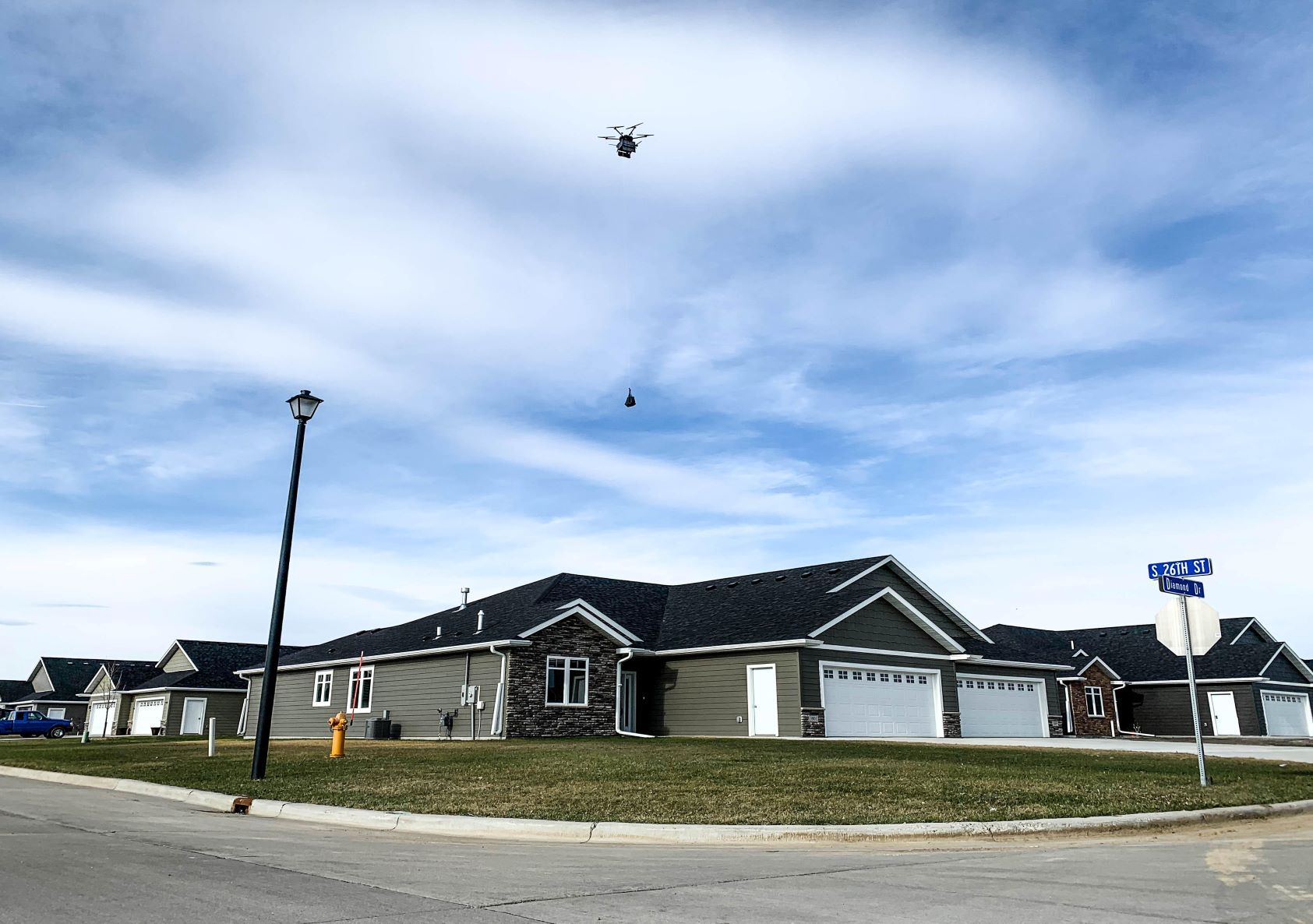

The prospect of using drones to make deliveries has been hovering on the horizon for the best part of a decade. Amazon CEO Jeff Bezos unveiled plans for ‘Prime Air’, a drone-based delivery network, back in 2013. It has still yet to materialise.
Since that announcement, technological advances, both in the drones themselves and in the infrastructure required to co-ordinate them safely, have put a handful of drone-delivery-as-a-service (DDaaS) providers in the skies. They have found most success in remote areas that are hard to reach by road, and they have the potential to extend the benefits of e-commerce to currently underserved communities.
Lockdowns introduced to contain the Covid-19 pandemic, meanwhile, have provided fresh incentive for automated deliveries. Drone deliveries have been used as part of the medical response to coronavirus in 18 countries, a recent study by UNICEF found.
However, safety concerns mean the regulatory environment and technology infrastructure required to support widespread adoption is still a work in progress.
Drone delivery success stories
Manna is a DDaaS company based in Galway, Ireland. It is focused on the food delivery market, among others, and its self-built drones promise a maximum delivery time of three minutes.
Bobby Healy, the company’s CEO and co-founder, told Tech Monitor that this could make new delivery-based business models, such as Deliveroo and Uber Eats, viable outside of dense, urban areas.
“The people who really want this are the people in suburbs that don’t have Deliveroo and Uber Eats,” he explains. “None of those companies work in the suburbs because they’re not profitable.”
He adds, drone deliveries are only viable in areas with low building density. “Skyscrapers and drones don’t go well together.”

The service could prove transformational for local businesses, he believes. “We’re enabling local retailers, like the local bookshop or the local restaurant, to get to a catchment area of about 50 square kilometres for free. And now the local butcher, the local fishmonger, all of these businesses have a free delivery platform to everyone in that suburb, and that is, we think, seismic for job creation and consumer experience.”
In the meantime, the company has a contract with a local department store and is running a trial with supermarket giant Tesco. It currently conducts about 100 deliveries a day. “We’ve delivered fresh eggs that don’t crack. Our number one thing we deliver today, it’s coffee and croissants.”
With Ireland under lockdown throughout November, Healy is anticipating a busy holiday season this year. “As nothing’s open, people will obviously order from Amazon and all the big guys; we’ve set up a bunch of stores for just general gifts,” he says. “We think that particularly due to people who cram and don’t plan ahead, we’re going to be selling like hotcakes”.
Another DDaaS provider ramping up its operations is the Israeli start-up Flytrex. It currently operates in North Carolina, North Dakota and the Icelandic capital of Reykjavík, and is focused on delivering pre-cooked meals. “We’ve designed a drone system capable of delivering a dinner for a family in the suburbs,” says co-founder and CEO Yariv Bash. “That was the whole concept of the system. So it has to be very safe, very quiet, and very affordable.”
Flying beyond the line of sight
Despite these examples, broader rollout is not about to explode just yet. Widespread DDaaS adoption will have to wait until regulatory bodies are happy with the systems in place to control several drones in flight in the same area.
The UK’s Civil Aviation Authority, which governs commercial use of the country’s airspace, currently requires commercial drones to operate under human supervision. This significantly limits the viability of drone-based deliveries, explains Simon King, partner of the deep-tech group at Octopus Investors.
“The vision of the future – where you’ve got drones picking up packages and moving them all around – only works if the regulator says it’s okay for this drone to be flying itself and to not have a human operator who’s responsible and who can see it at all times,” King explains.
The CAA is currently laying the groundwork to allow commercial drones to fly ‘beyond the visual line of sight’ (BVLOS). It has published guidelines on the technological capabilities required to co-ordinate commercial drones safely. This includes systems that allow drones to be detected by other aircraft and traffic controllers, known as “electronic conspicuity”. It also has plans for a sandbox for experimental drone flights over the North Sea, as first reported by drone business magazine sUAS News.
Once the regulatory environment and technology infrastructure is in place to allow a large quantity of drones to safely navigate the skies, DDaaS may become more widespread. For the time being, commercial delivery drones will be confined to a few, low-density neighbourhoods.






